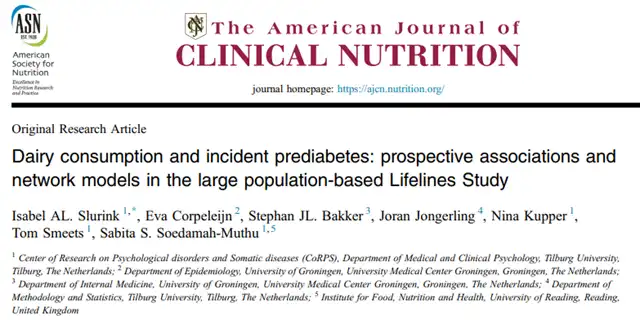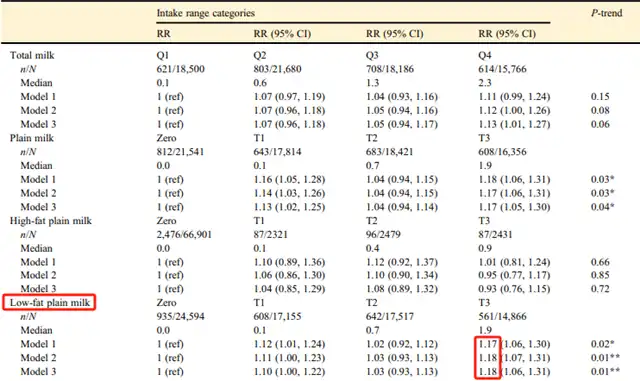Regular Consumption of Low-Fat Milk Linked to Increased Risk of Prediabetes
- Normal Liver Cells Found to Promote Cancer Metastasis to the Liver
- Nearly 80% Complete Remission: Breakthrough in ADC Anti-Tumor Treatment
- Vaccination Against Common Diseases May Prevent Dementia!
- New Alzheimer’s Disease (AD) Diagnosis and Staging Criteria
- Breakthrough in Alzheimer’s Disease: New Nasal Spray Halts Cognitive Decline by Targeting Toxic Protein
- Can the Tap Water at the Paris Olympics be Drunk Directly?
Regular Consumption of Low-Fat Milk Linked to Increased Risk of Prediabetes
- Should China be held legally responsible for the US’s $18 trillion COVID losses?
- CT Radiation Exposure Linked to Blood Cancer in Children and Adolescents
- FDA has mandated a top-level black box warning for all marketed CAR-T therapies
- Can people with high blood pressure eat peanuts?
- What is the difference between dopamine and dobutamine?
- How long can the patient live after heart stent surgery?
Regular Consumption of Low-Fat Milk Linked to Increased Risk of Prediabetes, Study Finds
Milk, a commonly consumed beverage in daily life, known for its rich nutritional content, including protein, fats, carbohydrates, vitamins, and minerals, has been associated with providing essential nutrients for the body, enhancing physical health, and boosting the immune system.
Prediabetes refers to elevated blood sugar levels, exceeding the normal range but not meeting the diagnostic criteria for diabetes. Prediabetes increases the risk of developing type 2 diabetes and cardiovascular diseases, with dietary habits considered a potentially modifiable risk factor for preventing prediabetes.
Recently, researchers from Tilburg University in the Netherlands published a study titled “Dairy consumption and incident prediabetes: prospective associations and network models in the large population-based Lifelines Study” in the American Journal of Clinical Nutrition.
The study, involving over 70,000 participants, revealed that regular consumption of low-fat pure milk was associated with an 18% increase in the risk of prediabetes. However, frequent consumption of high-fat yogurt was linked to a 20% decrease in the risk of prediabetes.

In this research, the team analyzed data from the Lifelines cohort study, which included 74,132 participants with an average age of 46. Participants reported their dairy product intake through questionnaires, including whole dairy products, fermented dairy products, milk, yogurt, cheese, cream, and ice cream. The relationship between dairy product consumption and the risk of prediabetes was examined.
Prediabetes was defined as fasting blood sugar levels between 110-125 mg/dL or glycated hemoglobin levels between 6-6.5%. On average, participants consumed 3.5 servings of dairy products per day, with each serving equivalent to 150 ml of milk or 20 grams of cheese. During an average follow-up period of four years, 2,746 cases of prediabetes were recorded.
The study found that individuals with the highest intake of low-fat pure milk had an 18% higher risk of developing prediabetes compared to those with the lowest intake. Conversely, individuals with the highest intake of high-fat yogurt had a 20% lower risk of prediabetes compared to those with the lowest intake.

Link between low-fat milk and prediabetes
Moreover, regardless of fat content, whole dairy products, whole fermented dairy products, and cheese, as well as high-fat pure milk, yogurt, and ice cream, showed no significant association with the risk of prediabetes.
The researchers also explored the network relationships between dairy products, risk factors, and dietary intake. They found that low-fat milk consumption was often associated with the consumption of bread, meat, and other high-fat, energy-dense foods, which could be a potential factor in the relationship between low-fat milk and prediabetes.
In summary, this large-scale prospective study suggests that regular consumption of low-fat milk is associated with a higher risk of prediabetes. It is noteworthy that another study published in PLoS Medicine found that individuals with higher intake of dairy fat had a lower risk of cardiovascular disease, indicating complex associations between dairy consumption, health outcomes, and disease risks.

Research Paper Links:
Regular Consumption of Low-Fat Milk Linked to Increased Risk of Prediabetes
(source:internet, reference only)
Disclaimer of medicaltrend.org
Important Note: The information provided is for informational purposes only and should not be considered as medical advice.



